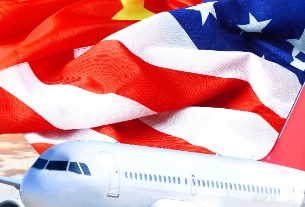28-May-07: While other airlines are reducing domestic seats in response to softening demand, Southwest is doing the opposite, expanding its routes and services in pursuit of a decades-long growth plan.
However, that strategy comes with risks and may require the airline to begin tweaking the business strategy that has helped revolutionize commercial aviation. There could already be signs of potential trouble. Southwest´s operating income dipped in the first quarter. Its stock price has been stagnant. Its aircraft have gotten less crowded. And it has begun losing the benefit of aggressive fuel hedges, which have saved the carrier billions of dollars and kept it profitable while other carriers floundered in recent years.
"The current environment is a little tough," Southwest CEO Gary Kelly conceded. He quickly added, however, that he believes his carrier is "stronger than at any other point in our history."
The carrier´s problems may stem from the same strategy that has rewarded the airline with 34 straight years of profits and a balance sheet that other airline executives openly envy. In 2006, Southwest became the largest airline in terms of domestic traffic for the first time in its history. That success has drawn increased focus on Southwest´s tactics and vocal complaints from its competitors that so much growth could harm the entire industry because they are unable charge higher fares to combat rising fuel costs.
Since its inception, Southwest has pursued an expansion policy that added more services, seats and aircraft to gain market share, even in tough times. While other carriers were reeling from a major economic downturn and slashing their fleets, Southwest added 120 aircraft to its 494-aircraft fleet since 2002. It also expanded its services by 15% and its available seat miles by 35% from 2002 through the end of 2006. During the first four months of 2007, the carrier added 21,000 services and 2.3 million seat miles, an 8% year-on-year increase. It plans to add 56 more aircraft to its fleet by the end of 2008.
For the most part, Southwest used its growing fleet to serve less-expensive secondary airports near major markets, like Baltimore Washington International Thurgood Marshall Airport, allowing the airline to keep down costs and boost efficiency while still reaching large numbers of potential customers. Southwest also served some larger airports where it felt it could quickly gain market share.
However, its growth has forced Southwest to find airports that it had long avoided or abandoned: congested hubs dominated by major carriers and served by other LCCs. For example, last year, Southwest moved into Denver and Washington´s Dulles International Airport, both served heavily by United Airlines. In 2004, it launched service in Philadelphia, a hub of US Airways. It also plans to return to San Francisco International Airport in Aug-07. United has a major base of operations there.




